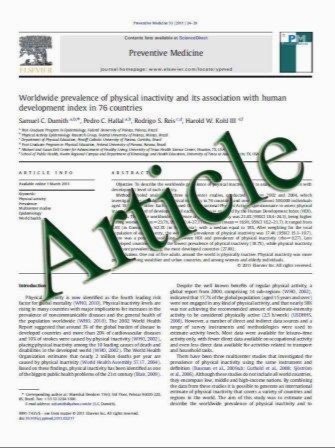Clinical risk factor assessment had better discriminative ability than bone mineral density in identifying subjects with vertebral fracture
- نوع فایل : کتاب
- زبان : انگلیسی
- مؤلف : S. W. Y. Tsang & C. H. Bow & E. Y. W. Chu & S. C. Yeung & C. C. Soong & A. W. C. Kung
- چاپ و سال / کشور: 2010
Description
Summary This study evaluated the characteristics of patients with vertebral fractures and examined the discriminative ability of clinical risk factors. The findings provide further insights into possible development of a simple, cost-effective scheme for fracture risk assessment using clinical risk factors to identify high-risk patients for further evaluation. Introduction Vertebral fractures are the most common complication of osteoporosis. The aim of this study was to evaluate the characteristics of patients with vertebral fractures and to determine the discriminative ability of bone mineral density (BMD) and other clinical risk factors. Methods Postmenopausal Southern Chinese women (2,178) enrolled in the Hong Kong Osteoporosis Study since 1995 were prospectively followed up for fracture outcome. Subjects (1,372) with lateral spine radiographs were included in this study. Baseline demographic, BMD, and clinical risk factor information were obtained from a structured questionnaire. Results Subjects (299; 22%) had prevalent vertebral fractures. The prevalence of vertebral fractures increased with increasing age, number of clinical risk factors, and decreasing BMD. The odds of having a prevalent vertebral fracture per SD reduction in BMD after adjustment for age in Hong Kong Southern Chinese postmenopausal women was 1.5 for the lumbar spine and femoral neck. Analysis of the receiver operating characteristic curve revealed that bone mineral apparent density did not enhance fracture risk prediction. Subjects with .4 clinical risk factors had 2.3-fold higher odds of having a prevalent vertebral fracture while subjects with .4 clinical risk factors plus a low BMD (i.e., femoral neck Tscore <.2.5) had 2.6-fold. Addition of BMD to clinical risk factors did not enhance the discriminative ability to identify subjects with vertebral fracture. Conclusions Based on these findings, we recommend that screening efforts should focus on older postmenopausal women with multiple risk factors to identify women who are likely to have a prevalent vertebral fracture.
Osteoporos Int (2011) 22:667–674 DOI 10.1007/s00198-010-1260-z Received: 6 October 2009 / Accepted: 30 March 2010 / Published online: 26 May 2010


